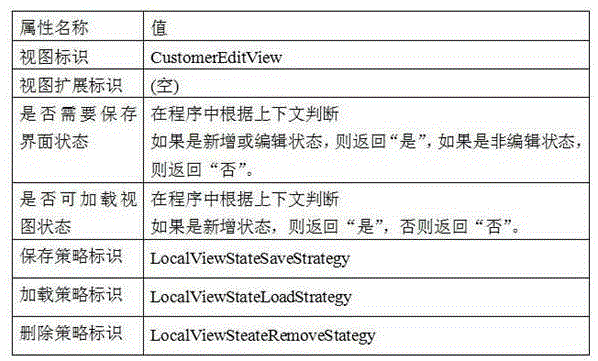A way to automatically save the state of the user interface
A user interface and automatic saving technology, which is applied in the direction of response error generation, redundant data error detection in computing, etc., can solve problems such as poor user experience, low efficiency, and data loss, and achieve improved user experience, less cumbersome effects
- Summary
- Abstract
- Description
- Claims
- Application Information
AI Technical Summary
Problems solved by technology
Method used
Image
Examples
Embodiment 1
[0038] The method for automatically saving the user interface state of the present invention comprises the following steps:
[0039] A. Define the interface standard: define the interface standard followed by the specific interface to realize the state preservation of the user interface;
[0040] B. Runtime control: when the system is running, save and load the view state of the specific user interface through the interface standard defined in operation step A.
[0041] as attached figure 1 As shown: the interface standard described in step A includes state view interface, view state context, view state saving policy interface, view state loading policy interface, view state deletion policy interface, view state saving policy configuration, view state loading policy configuration and view state deletion policy configuration,
[0042] The "view" is the Chinese translation of the English "View", which is used to abstractly represent a user interface.
[0043] The state view i...
Embodiment 2
[0078] An example of an actual implementation scenario makes the above-mentioned objectives, features and advantages of the present invention clearer and easier to understand.
[0079] The implementation scenario is divided into two phases: development phase and operation phase. Take a simple customer information entry interface as an example.
[0080] exist development stage , the system prefabricated three strategies for user state operations: LocalViewStateSaveStrategy (interface view saving strategy), LocalViewStateLoadStrategy (interface view loading strategy), LocalViewSteateRemoveStategy (interface view deletion strategy). The three strategies provide strategies for saving, loading, and deleting interface states saved in local storage.
[0081] Taking the customer information input interface as an example, the customer information input interface has six fields including customer number, customer name, contact number, email, contact address, and postal code. An exam...
PUM
 Login to View More
Login to View More Abstract
Description
Claims
Application Information
 Login to View More
Login to View More - R&D
- Intellectual Property
- Life Sciences
- Materials
- Tech Scout
- Unparalleled Data Quality
- Higher Quality Content
- 60% Fewer Hallucinations
Browse by: Latest US Patents, China's latest patents, Technical Efficacy Thesaurus, Application Domain, Technology Topic, Popular Technical Reports.
© 2025 PatSnap. All rights reserved.Legal|Privacy policy|Modern Slavery Act Transparency Statement|Sitemap|About US| Contact US: help@patsnap.com


